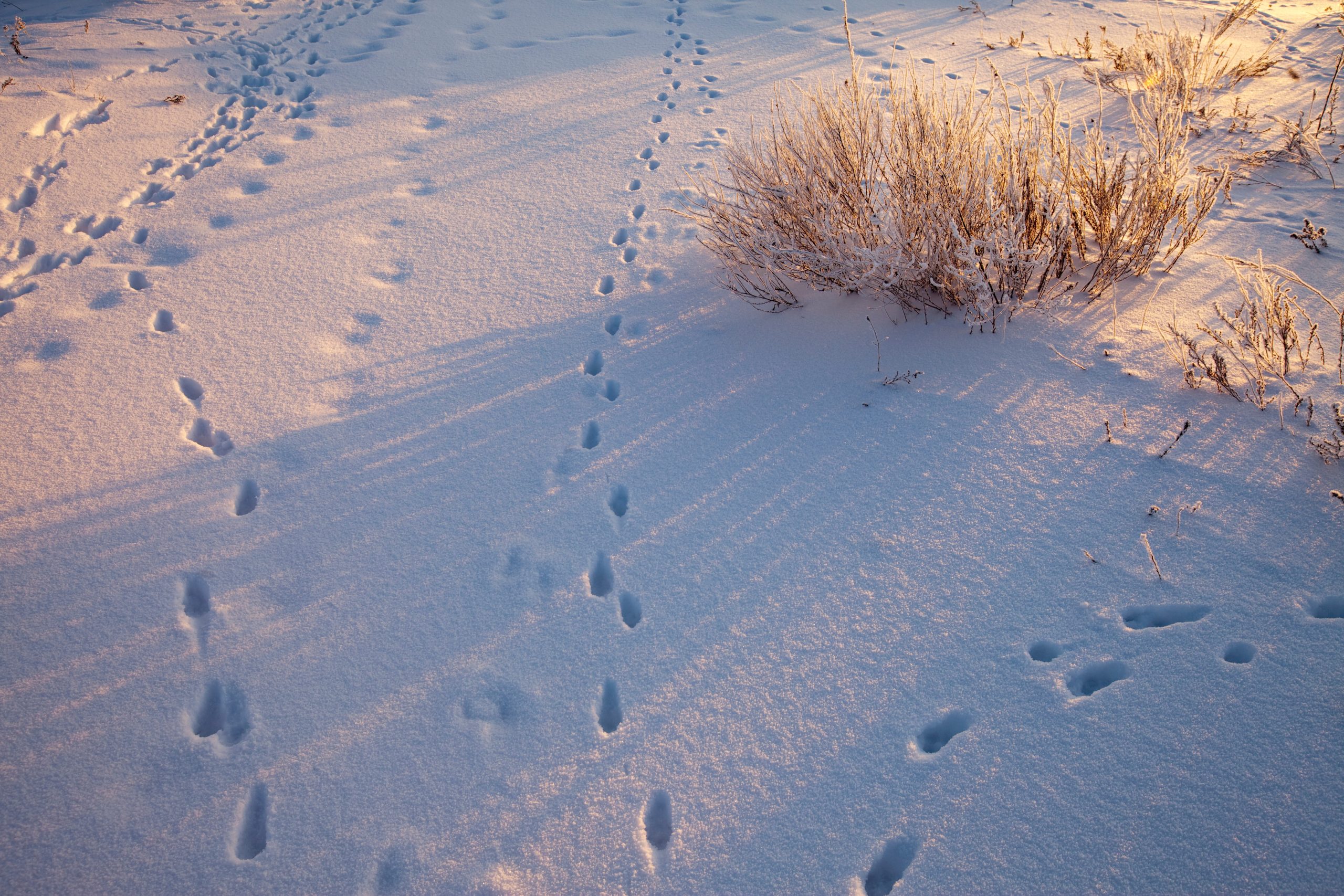
Identifying Animal Tracks in Snow
Who lives in the Foothills?
Fresh snow creates great opportunities to see animal tracks in the snow! Fresh, thin snow is ideal for tracking. If the snow is too dry, it can be blown away, and deeper snow can obscure animal prints. Below are real-life images of common animal tracks we can find right here in Salt Lake City.
Always remember, if you do encounter wildlife while out and about, give them plenty of space.

COYOTE
Coyotes walk in a straight line stepping their rear foot inside the print of the front foot. In the snow, look for dog-like prints, about 2.5” to 3.5” long.

FOX
Another straight-line walker, foxes drag their feet when walking, obscuring their tracks. Their furry feet also make their tracks less defined in the snow.
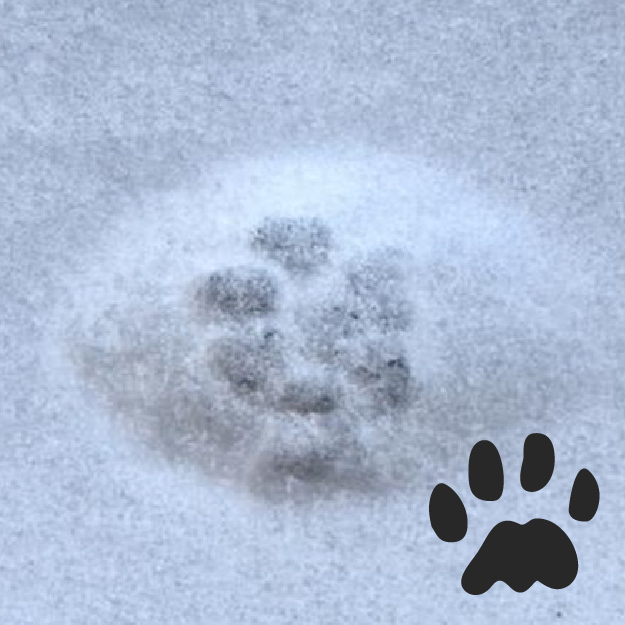
BOBCAT
Bobcat tracks look similar to those of coyotes or foxes. The key difference is their lack of claw imprints. Bobcats are active winter hunters, making them fun to track in the snow.
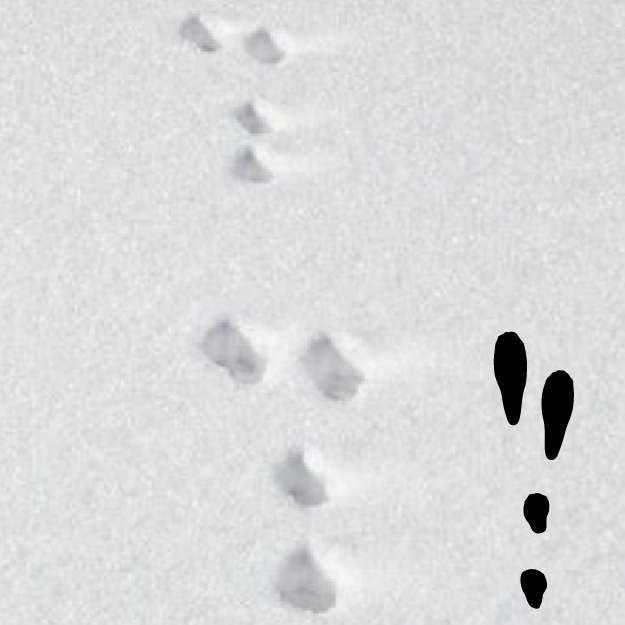
RABBIT
Rabbit tracks are some of the easiest tracks to identify in snow. Look for a bounding pattern with two large ovals and two small ovals.
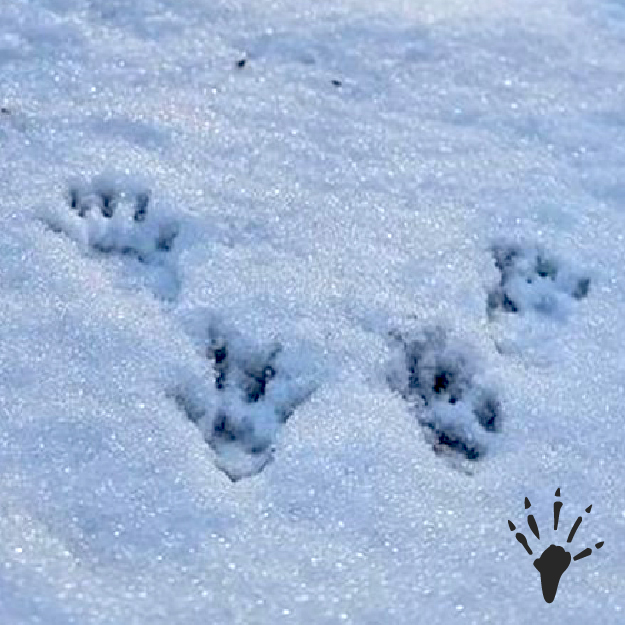
SQUIRREL
Squirrels are bounders like rabbits. Their tracks are in sets of four, with the larger back feet ahead of the smaller front feet.
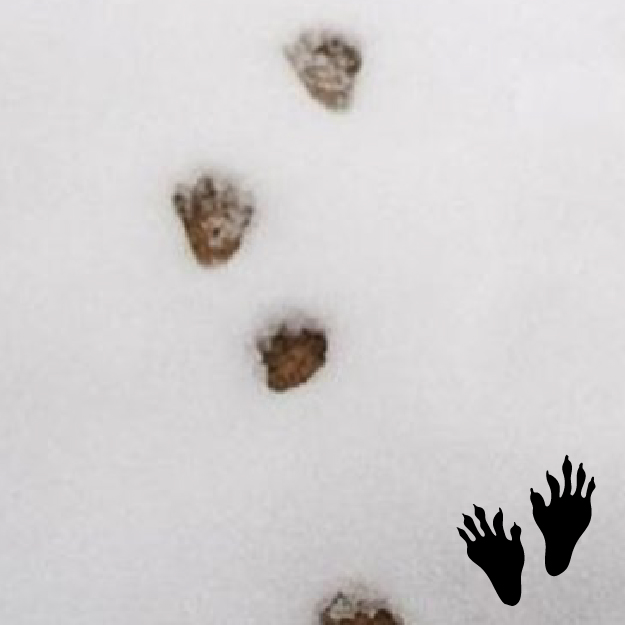
RACCOON
Raccoon tracks look like small, human hands. They carry more weight on their back feet, in the snow look for deeper hind prints.
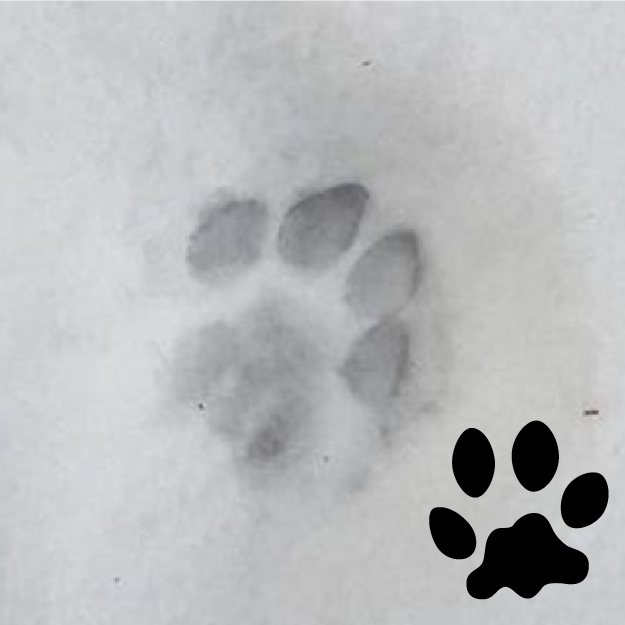
MOUNTAIN LION/COUGAR
Mountain lions or cougars leave large round tracks about 3.75″ in diameter. Four toes lack claws with a larger 3-lobed back pad. Cougars are reclusive; a snowy day is a great time to see tracks.
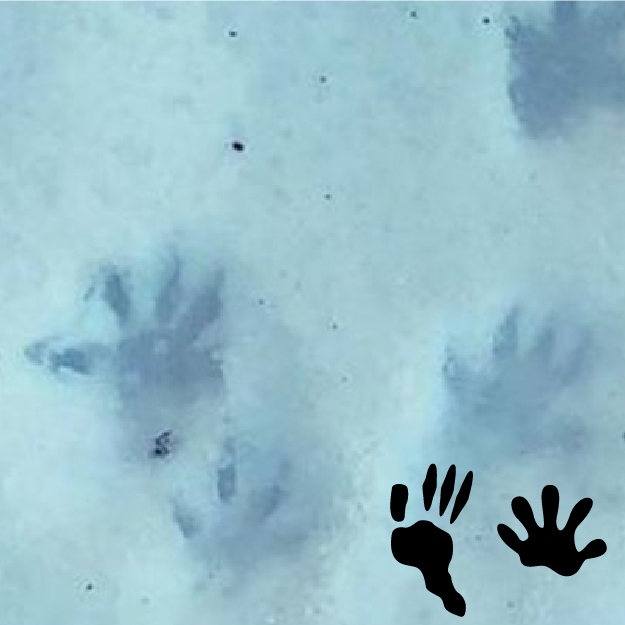
OPOSSUM
Opossum tracks are similar to raccoon tracks. The opossum’s large opposable thumb on the back foot is splayed out more and lacks a claw.
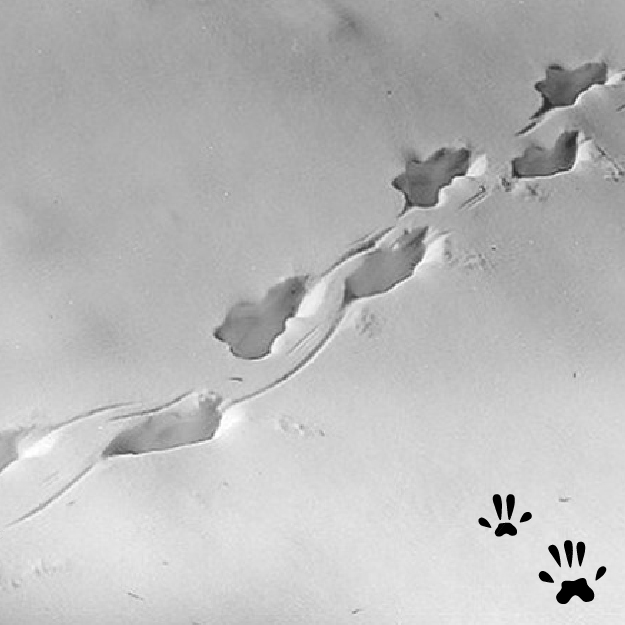
RAT
These tiny tracks have four toes on the front feet and five on the back. In snow, a telltale sign is the imprint of their tail, which drags through the middle of their tracks.
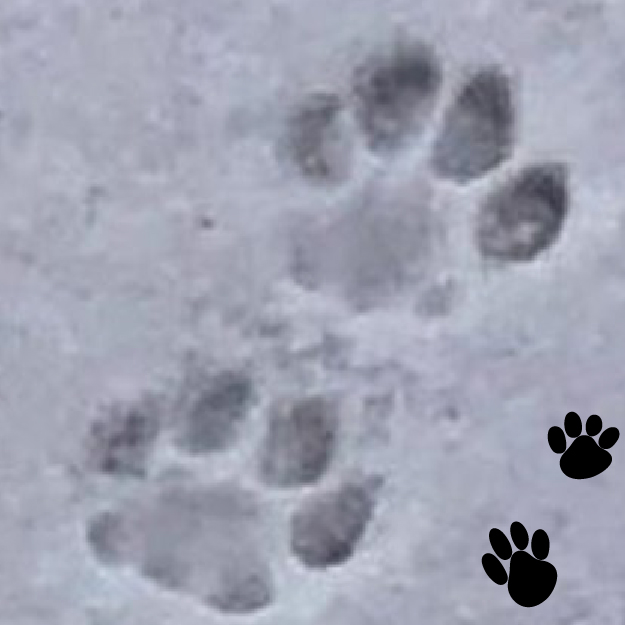
CAT
Small feline prints with four toes, 1-1.5″ in diameter, indicate a house cat. After fresh snow, you will likely find cat prints right outside your house.
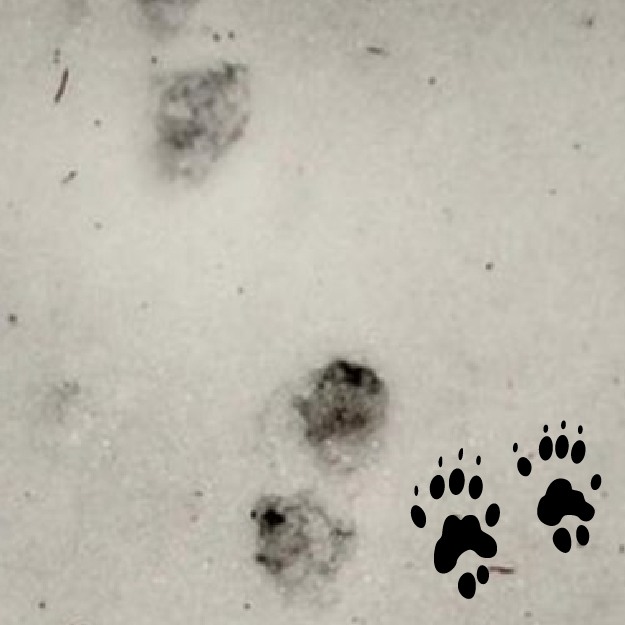
SKUNK
Between 2-2.5″ in length, skunk tracks look similar to house cat tracks. If the five toed tracks have claws, they belong to a skunk.
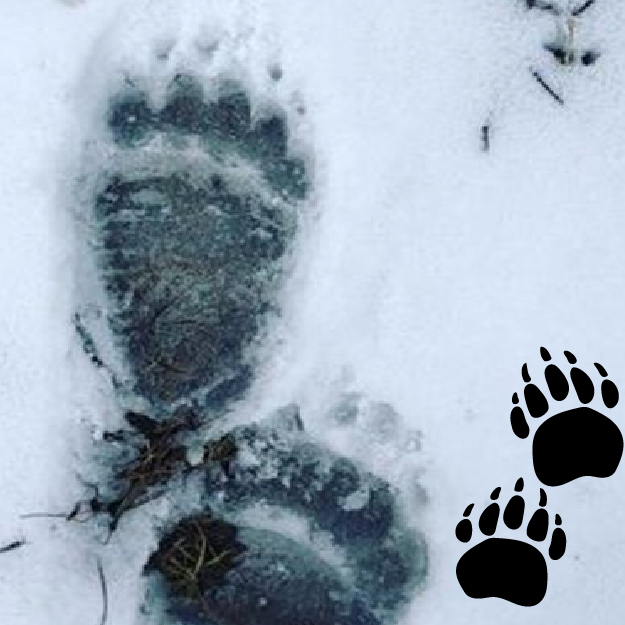
BEAR
Bear tracks look fairly similar to human tracks. They tend to amble with the back foot falling close to the front. Early spring is the best time to see bear tracks after they awake from hibernation.
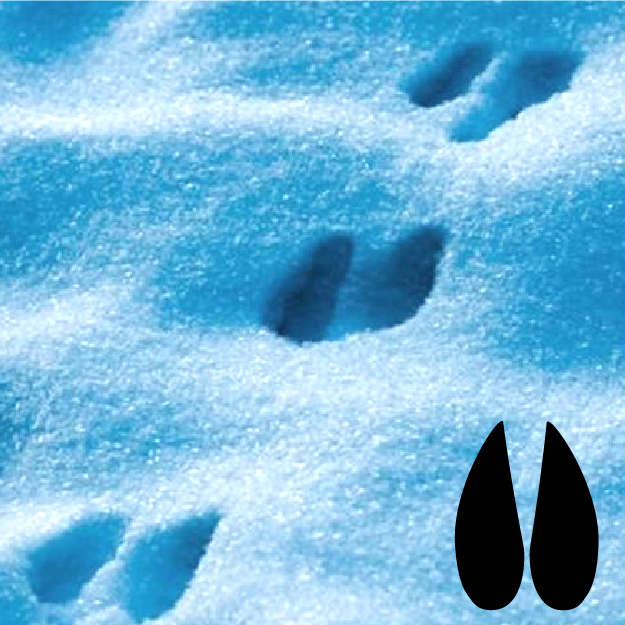
MOOSE
Moose have large hoofed tracks measuring 5-7″ in length. Their hoofed toes form an upside-down heart shape.
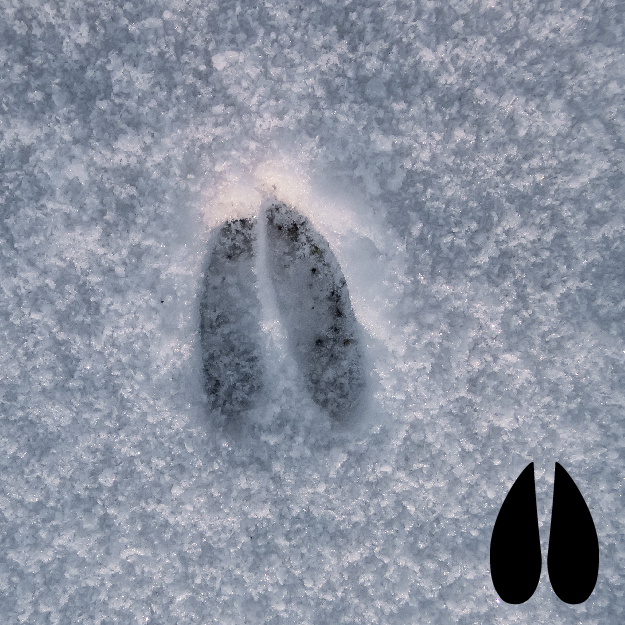
DEER
Deer tracks also form an upside-down heart shape but range in size from 2-3.5” long. An adult deer’s stride is about 13-26” long, and 4-10” wide.
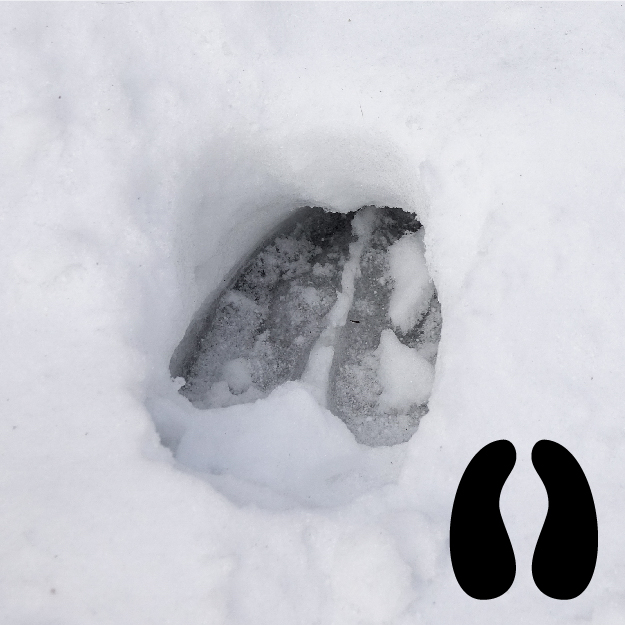
ELK
Elk tracks are rounder and larger than deer tracks and typically 4-4.75” long. An elk’s walking stride is 3-5’ when walking and can be more than 15’ when bounding.
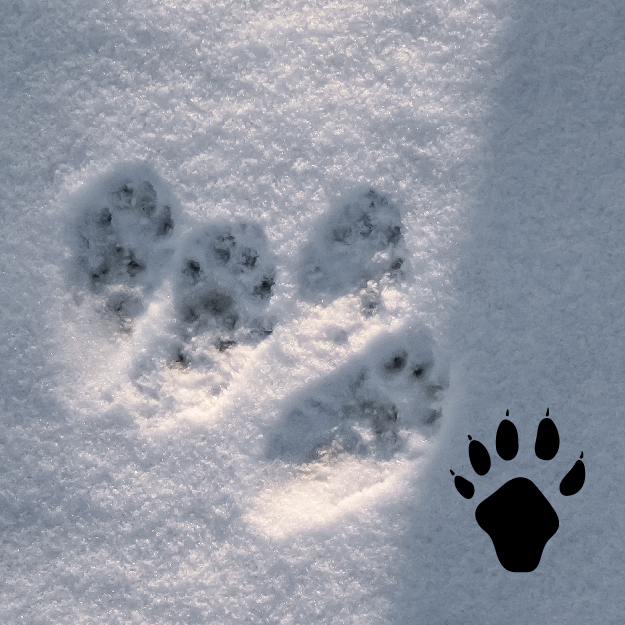
PINE MARTEN
Marten tracks are slightly smaller at 1.125-2.25″ in width. The carpal pad is covered with fur. So, while the “heel” often registers, a discrete heel pad does not register.

We can all be good stewards of our public spaces! For more tips on how to Be W.I.L.D. – Welcoming, Inclusive, Limit Your Impact, and Do What You Can – visit slcbewild.com.